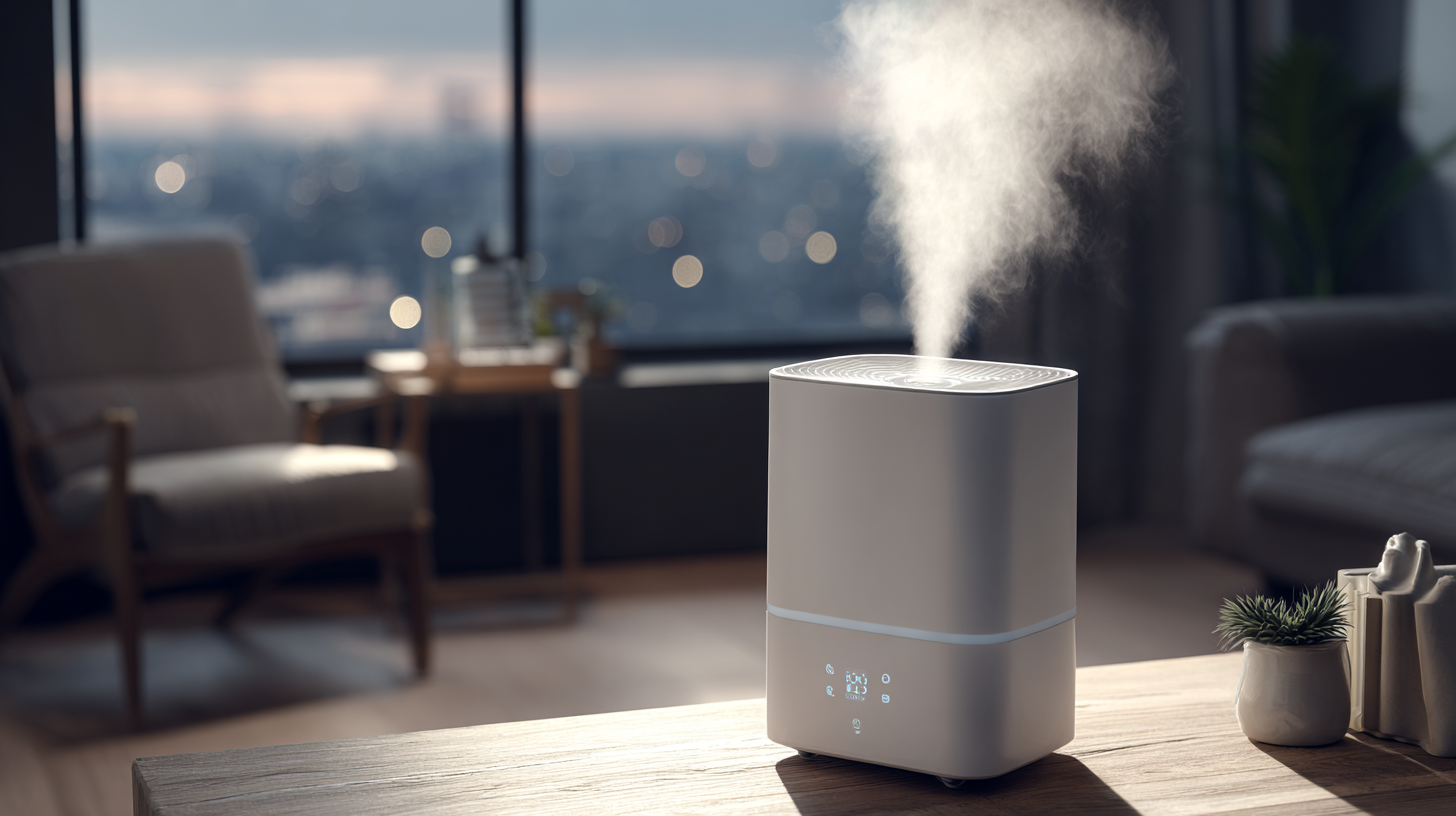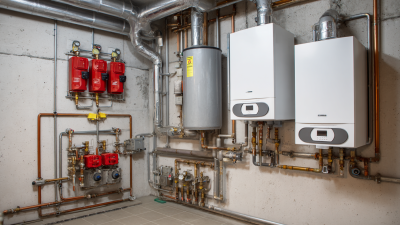Indoor air quality significantly influences our health and well-being, yet many households overlook a crucial component in achieving a balanced environment: the home humidifier system. According to the U.S. Environmental Protection Agency (EPA), indoor air can be two to five times more polluted than outdoor air, leading to various health issues ranging from respiratory ailments to allergies. Besides, a study by the Asthma and Allergy Foundation of America indicates that maintaining optimal humidity levels (between 30% and 50%) can reduce the spread of airborne viruses and alleviate asthma symptoms. By incorporating a home humidifier system, homeowners can effectively manage humidity levels, enhance comfort, and improve indoor air quality. This guide will delve into the essential aspects of selecting and utilizing a home humidifier system, ensuring that you and your family breathe cleaner, healthier air.

Indoor humidity levels play a crucial role in maintaining a healthy and comfortable living environment. When humidity is too low, it can lead to dry skin, irritated sinuses, and respiratory problems. Additionally, dry air can exacerbate the effects of allergens and irritants, making it particularly challenging for those with asthma or allergies. Conversely, excessive humidity can foster the growth of mold and dust mites, which also pose risks to respiratory health. Striking the right balance is essential for optimal indoor air quality.
Using a home humidifier system can significantly improve your indoor air quality by regulating humidity levels. These systems help maintain an ideal range, typically between 30% and 50% relative humidity. By doing so, they not only enhance comfort levels but also protect wooden furniture, musical instruments, and houseplants that thrive in balanced moisture. Understanding the importance of maintaining appropriate indoor humidity can lead to better health outcomes and an overall more comfortable living atmosphere, making a quality humidifier a worthwhile investment for any home.

When it comes to improving indoor air quality, selecting the right type of home humidifier is crucial. Humidifiers can significantly impact comfort levels, respiratory health, and overall well-being. According to the Environmental Protection Agency (EPA), the ideal indoor humidity level is between 30% and 50%. This range can help alleviate issues such as dry skin, respiratory irritation, and static electricity, while also preventing the growth of mold and dust mites.
There are several types of home humidifiers to consider, each with its unique benefits. Evaporative humidifiers use a fan to blow air through a wet wick or filter, making them self-regulating; as humidity rises, their output decreases. Steam vaporizers boil water to produce steam and cool it before releasing it into the air but require frequent maintenance. Ultrasonic humidifiers use high-frequency vibrations to create a fine mist, offering a quiet operation and energy efficiency.
**Tips:** When selecting a humidifier, consider the size of the room and the desired humidity level. Regularly maintain and clean your humidifier to prevent bacteria and mold build-up. Additionally, using a hygrometer can help you monitor humidity levels effectively, ensuring your environment remains within the recommended range for optimal health.
When selecting a premium humidifier system, there are several key features to consider that can significantly enhance your indoor air quality. First, look for a unit with adjustable humidity settings that allow you to customize the moisture levels in your space. This is essential, as different environments and seasons require varying humidity levels for optimal comfort and health. Additionally, consider models equipped with built-in hygrometers, which provide real-time humidity readings and enable precise control.
Another important feature is the type of humidification technology used. Evaporative models tend to be self-regulating and prevent over-humidification, while ultrasonic units operate quietly and consume less energy. Additionally, ensure that the humidifier has a reliable filtration system to eliminate impurities from the water, contributing to cleaner, healthier air. Lastly, assess the maintenance needs of the system; a humidifier that is easy to clean and refill will save time and effort, ensuring consistent performance and durability over time.
Humidifiers play a crucial role in enhancing indoor air quality, particularly for individuals suffering from allergies and respiratory conditions. Recent research indicates that maintaining optimal humidity levels can significantly reduce allergens like dust mites and mold. By adding moisture to the air, humidifiers can alleviate symptoms of dryness in the respiratory tract, leading to improved breathing and overall comfort. Studies show that people with asthma or chronic obstructive pulmonary disease (COPD) may experience fewer flare-ups when humidity is properly controlled.
To maximize the benefits of your humidifier, consider these tips: First, monitor indoor humidity levels with a hygrometer to maintain a range of 30%-50%. This prevents excess moisture, which can promote mold growth. Second, regularly clean your humidifier to avoid bacteria and mineral buildup; follow the manufacturer’s instructions for maintenance. Lastly, use distilled or demineralized water to reduce the release of minerals into the air, ensuring cleaner humidity levels.
Ultimately, investing in a quality humidification system not only creates a more comfortable living environment but also serves as a proactive measure to support respiratory health and alleviate allergy symptoms.

Maintaining optimal performance of your humidifier system is crucial for ensuring a comfortable and healthy indoor environment. Regularly checking the water levels and refilling the unit as needed will prevent it from operating inefficiently. Additionally, using distilled or demineralized water can reduce mineral buildup in the system, which can lead to clogging and a decrease in performance.
Cleaning your humidifier is another essential maintenance practice. It's recommended to clean the tank and other components at least once a week to prevent mold and bacteria growth. Use a mixture of vinegar and water for a thorough cleanse, ensuring to rinse well afterward. Furthermore, replacing filters according to the manufacturer's instructions can significantly extend the life of your humidifier and enhance air quality, allowing for the maximum benefit of moisture in your living spaces.
| Humidifier Type | Ideal Room Size (sq ft) | Humidity Output (gal/day) | Maintenance Frequency | Filter Replacement Cycle (months) |
|---|---|---|---|---|
| Evaporative | 500 | 3-4 | Weekly | 6 |
| Ultrasonic | 350 | 2-3 | Every 2 weeks | 12 |
| Steam Vaporizer | 300 | 2-4 | Bi-weekly | 6 |
| Impeller | 400 | 2.5-3.5 | As needed | 6-12 |





